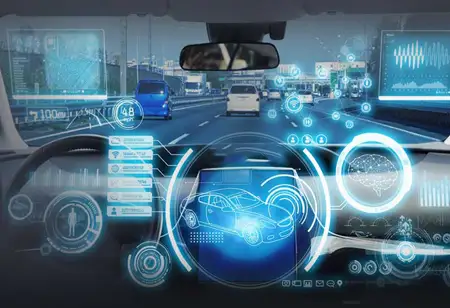THANK YOU FOR SUBSCRIBING
THANK YOU FOR SUBSCRIBING

By
Logistics Transportation Review | Friday, December 01, 2023
Stay ahead of the industry with exclusive feature stories on the top companies, expert insights and the latest news delivered straight to your inbox. Subscribe today.
Developing intelligent transport systems is considered vital for reducing city congestion and emissions. In order to improve efficiency across all modes and methods of transportation, real-time data regarding traffic can assist in making informed decisions
Fremont, CA: New and emerging technologies are continuously being used by city planners and officials to better manage their respective societies as more and more cities enter the era of digitization. In the context of transit, this is particularly true, which is one of the reasons why Intelligent Transportation Systems have become an indispensable part of every future Smart City. These systems are not only versatile and offer endless applications, but their use is no longer restricted to traffic control alone.
By addressing common transit problems such as congestion, they make traditional transportation systems more efficient, safe, and secure.
What Is An Intelligent Transport System?
It consists of vehicle-to-vehicle (V2V) and vehicle-to-infrastructure (V2I) technology that uses both wireless and wireline communications to transmit information and electronic components. In traffic and transportation management systems, ITS systems are used to improve the safety, efficiency, and sustainability of transportation networks, reduce traffic congestion, as well as improve the user experience.
Mobility
As far as mobility is concerned, ITS technology seeks to provide the shortest route between origins and destinations based on factors such as distance, time, and energy consumption and then comparing it to data-rich environments in order to determine which path is most optimal. In this way, different transportation networks and systems can be monitored and managed.
Safety
It can give speed warnings along slippery roadways when an Intelligent Transportation System is used for the purpose of increasing safety, effectively reducing the number of crashes and fatalities on slippery roads. This problem claims the lives of thousands of Americans every year.
Environment
Developing intelligent transport systems is considered vital for reducing city congestion and emissions. In order to improve efficiency across all modes and methods of transportation, real-time data regarding traffic can assist in making informed decisions. By improving the flow of vehicles on a daily basis, a significant amount of fuel is saved. As a result, fewer harmful emissions are released into the atmosphere, and a positive impact on the environment is created.
Applications of Intelligent Transport Systems
The automation of these systems offers a number of advantages, such as the elimination of the need for human intervention in different activities that were previously dependent on human intervention. Real-time monitoring and adjustment of the performance of road networks is also possible. In addition to more affordable and plentiful data collection sources, previously expensive infrastructure can now be used to collect data.
I agree We use cookies on this website to enhance your user experience. By clicking any link on this page you are giving your consent for us to set cookies. More info





